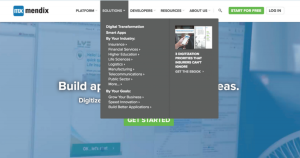What Does This News From Google Mean?
Attribution is one of the biggest challenges that marketers have been facing for years. Attribution helps marketers understand what tactics, devices, and channels are helping your prospects turn into customers. Google announced this week Google Attribution. This solution aims to fully understand each touchpoint a user goes through from an initial impression of your brand all the way until he or she becomes a customer. Google Attribution’s goal is to help marketers optimize their budget by showing how certain touchpoints are more influential than others in a customer’s path to purchase.
This new product from Google also integrates your attribution data with AdWords and DoubleClick. This is where Google is going to benefit. When smart marketers know what works, they double down on that channel/tactic and milk it until the channel/tactic is overused and ineffective before moving on. Having attribution data sitting next to your advertising throttle will make it a lot easier for marketers to pump more dollars into ads.
How Analytics Platforms Handle Attribution Today
As you know, a prospect goes through multiple touchpoints with a brand both on site and off site before he or she ends up becoming a customer. Today’s analytics platforms unfairly give credit to either the first touchpoint or the last. HubSpot’s sources report first-touchpoint attribution, whereas Google Analytics by default reports on the last touchpoint.
Though there are arguments for each reporting configuration, the touchpoints in the middle get lost and are given little to no credit in the customer’s path to purchase. This makes it hard for the marketer to show ROI for the investment in the middle touchpoints. Based on this chart below, your display ads and direct visits would get all of the credit to the sale in a first- or last-touch attribution model.

Marketers also have access to other attribution models within certain analytics platforms. These include time decay, customizable, linear, and position-based. There are pros and cons to all of these. Google Attribution uses machine learning to understand your conversion paths and the sequential order for each touchpoint that a prospect hits before becoming a customer. This analysis will give you an attribution model that is custom to your business. This is the golden ticket for marketers.
What Does Google Attribution Mean for Inbound Marketers?
We have yet to see Google’s release of its attribution tools, but given its significant investment in Adometry and continuous efforts incorporating third-party data for offline sales, we expect to see clearer reporting on the middle touchpoints (i.e. assisted interaction) across devices and their influence in the consumer’s path to purchase.
Inbound marketers will be impacted by this through:
- Better closed-loop reporting: Google’s transactional data will help businesses more precisely measure the ROI of their ad spend as it relates to offline purchases. Google shows that its third-party partnerships are now able to track 70 percent of credit and debit card transactions in the US.
- More credit for nurturing and middle-funnel activities: Email nurturing or retargeting ads for existing prospects is rarely given much credit from an attribution perspective. We expect to see these channels given more weight and credit in the equation.
- More predictive and accurate marketing recommendations: Understanding CPA on a channel basis is key to knowing the ROI of your marketing spend. We hope Google Attribution’s machine-learning algorithms can provide more accurate calculations that enable marketers to forecast outcomes based on channel.
- Realigning tactics based on ROI: The inbound playbook stages of attract, convert, close, and delight won’t change, but the tactics and time you spend optimizing each stage will. You may spend 20 percent of your week blogging now; however, with Google Attribution, you may identify that, in reality, you should be spending more of that time promoting content using social ads, optimizing your mid-funnel workflows, or building out a more powerful customer referral program.
We look forward to getting access to Google Attribution later this year and plan to share how this impacts our funnel. What are some types of attribution issues your business faces, and how have you addressed them so far?
Digital & Social Articles on Business 2 Community(54)
Report Post







